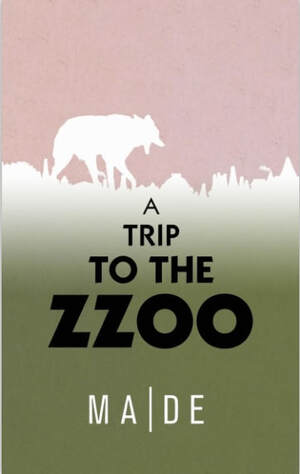MA|DE's A Trip to the ZZOOReviewed by Jeremy Colangelo
|
|
The latest chapbook from MA|DE, the “collaborative writing entity” comprised of Mark Laliberte and Jade Wallace, A Trip to the ZZOO is an intriguing, cerebral collection of poems the contents of which strike, like any good poetry, in both shocking and inevitable ways.
Its opening poem, “Splice/Stitch,” sets out its central conceit: these are not quite nature poems, in the sense of poems about or describing the natural world, the poetic voice working like a distanced spectator that is separate from the world. Rather they are closer to what the philosopher Timothy Morton calls “ecological,” that is, imbricated in the system they describe, aware at all times of the extent to which humans and their observations are a part of the system. So, as the poem begins: |


